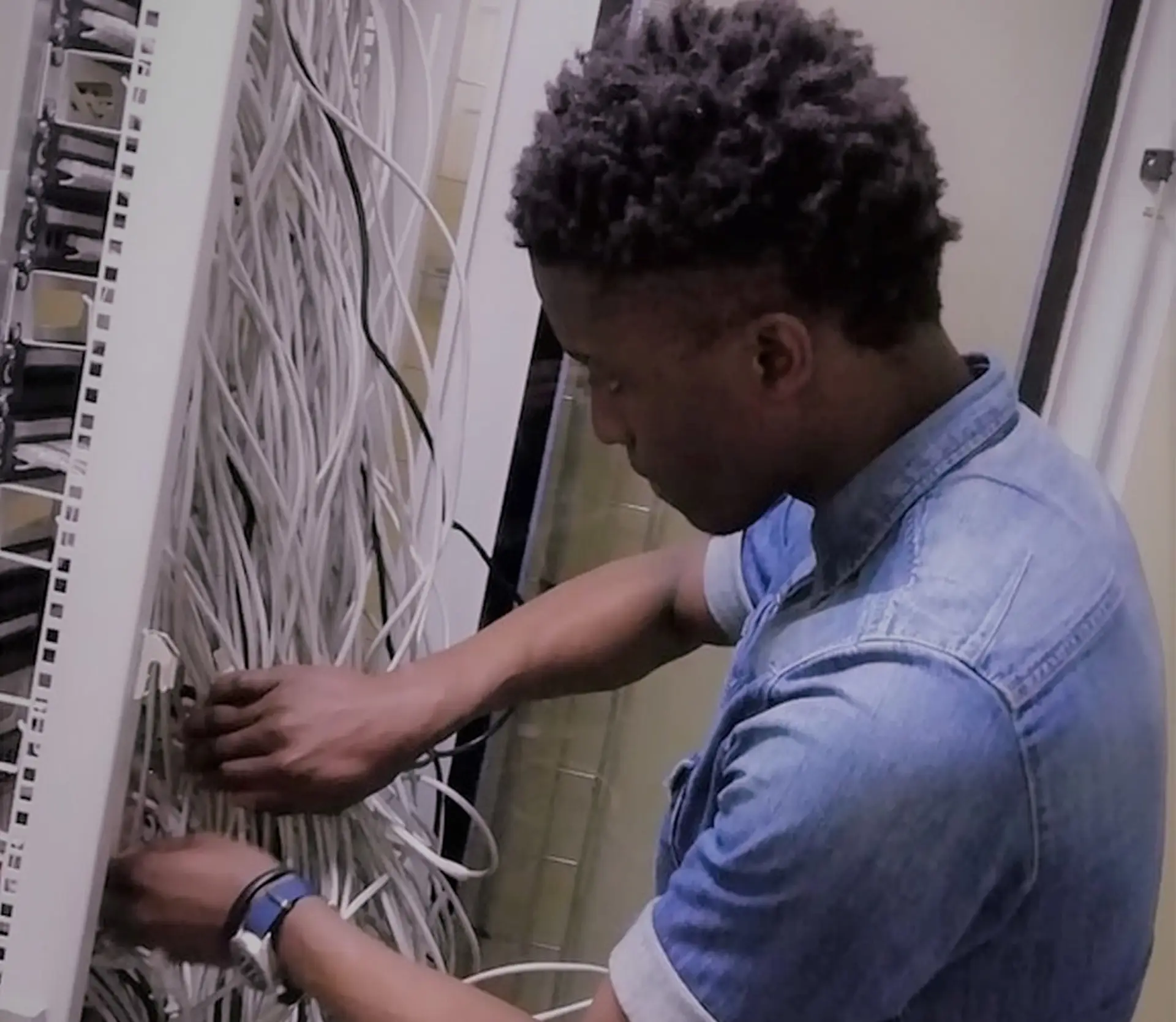In this article, we are going to talk about everything related to the profession of fiber installer.
Read further, because we are going to explain what are the necessary studies, the job profile, and the knowledge required to become a Structured Cabling Technician, Contractor, and/or Engineer, in case you’re interested in going into this career path.
What Is a Structured Cabling Technician & What It Does
The profile of a fiber optic installer is that of a person with skill and knowledge of everything related to computing and telecommunications. You must be a meticulous person, who knows how to analyze possible problems and solve difficulties that arise in the installation.
It is also important to be a person with initiative, good observation, and decision-making.
Sometimes in this type of work, different alternatives may arise when passing cables, for example, and it is necessary to make the best decision without delay. Therefore, these factors must be present in the profile.
Regarding the necessary knowledge, we can name some such as transmission systems, fiber optic, and cabling components, security measures, telecommunications installations, preparation of pipelines, IP networks, and in general computer knowledge to be able to carry out tests.
A fiber optic installer will have different functions, as we are going to see.
Beyond the installation itself, you will also have to take care of maintenance, solve certain errors that may appear, or fine-tune the equipment connected to the network, such as the router.
- Structured Cabling Installation/Deployment – The fiber installer will be in charge of taking the cables from the socket to the entrance of the house and, later, carrying out the installation inside.
This installation consists of taking the wiring to where the router is going to be placed. From there the different equipment will be connected, either by cable or wirelessly. Sometimes they will have to carry out small work to be able to pass the cables, while in others everything will already be prepared to only pass them.
- Equipment Set-up – Here we are not only referring to the wiring itself, the fact of allowing the signal to reach the homes correctly. It is also important that the clients’ routers are well-connected and have a signal.
Therefore, configuring the router is a task-specific to this job position. They must leave the installation working correctly and that implies preparing a device as important as the router, with the wireless network configured, and making sure that it offers a problem-free connection.
- Maintenance and Troubleshooting – This is especially in order to prevent problems and carry out a periodic review of the installation so that everything works correctly, the speed is adequate, and cuts never occur.
This is generally done in companies and large centers where the installation is more complex than in a home. It is there where more complications can arise and where it is required to carry out periodic tasks with the mission of achieving optimal operation at all times.
They are also in charge of solving problems that may have appeared. For example, if a client reports that they do not have an Internet connection or the speed is not adequate, their function is to detect what the problem may be and see if it is due to a bad cable, or a bad connector, among others.
Structured Cabling Technician Salary & Jobs Opportunities
As in most jobs of this type, the salary will depend on experience, knowledge, and also the functions for which it is commissioned.
However, we can take into account what the general average salary may be.
If we look at job boards like Indeed and Glassdoor, which is responsible for analyzing salaries, we can see that the payment varies between $20/hour and $35/hour, which ranges between $800 and $1,400 per week, in case of working 40 hours per week.
Being able to reach $70,000 per year. Now, you can get an idea of what the usual salary is for this type of job as a fiber optic installer.
How to Become a Structured Cabling Contractor/Technician
To work as a fiber optic installer it is necessary to have knowledge related to computers, telecommunications, electronics, or electricity.
All of this will be very useful to be able to correctly install fiber both at home and in a more complex installation in a large company.
There are multiple studies related to this type of profession. There are university degrees that will allow you to acquire the necessary knowledge, such as telecommunications engineering, computer science (systems, management, software…), or any university degree related to electronics and electricity.
But there are also many training courses, both intermediate and advanced, that can help you to be installed with fiber optics. For example, a higher degree of electrical maintenance, systems, and networks.
In addition, there are more specific master’s degrees that you can also direct toward this branch.
However, to be a fiber optic installer you can take training courses. There are many since it is a profession that today is in high demand.
Fiber installation and maintenance courses, network data transmission courses, telecommunications specialist technicians, and other similar ones.
Of course, it is a job that requires constant training. Technology changes and so do the methods for installation, computer equipment, and everything necessary.
It is essential to adapt to changes and therefore it is convenient to train beyond the initial studies and be able to be prepared for any change.

